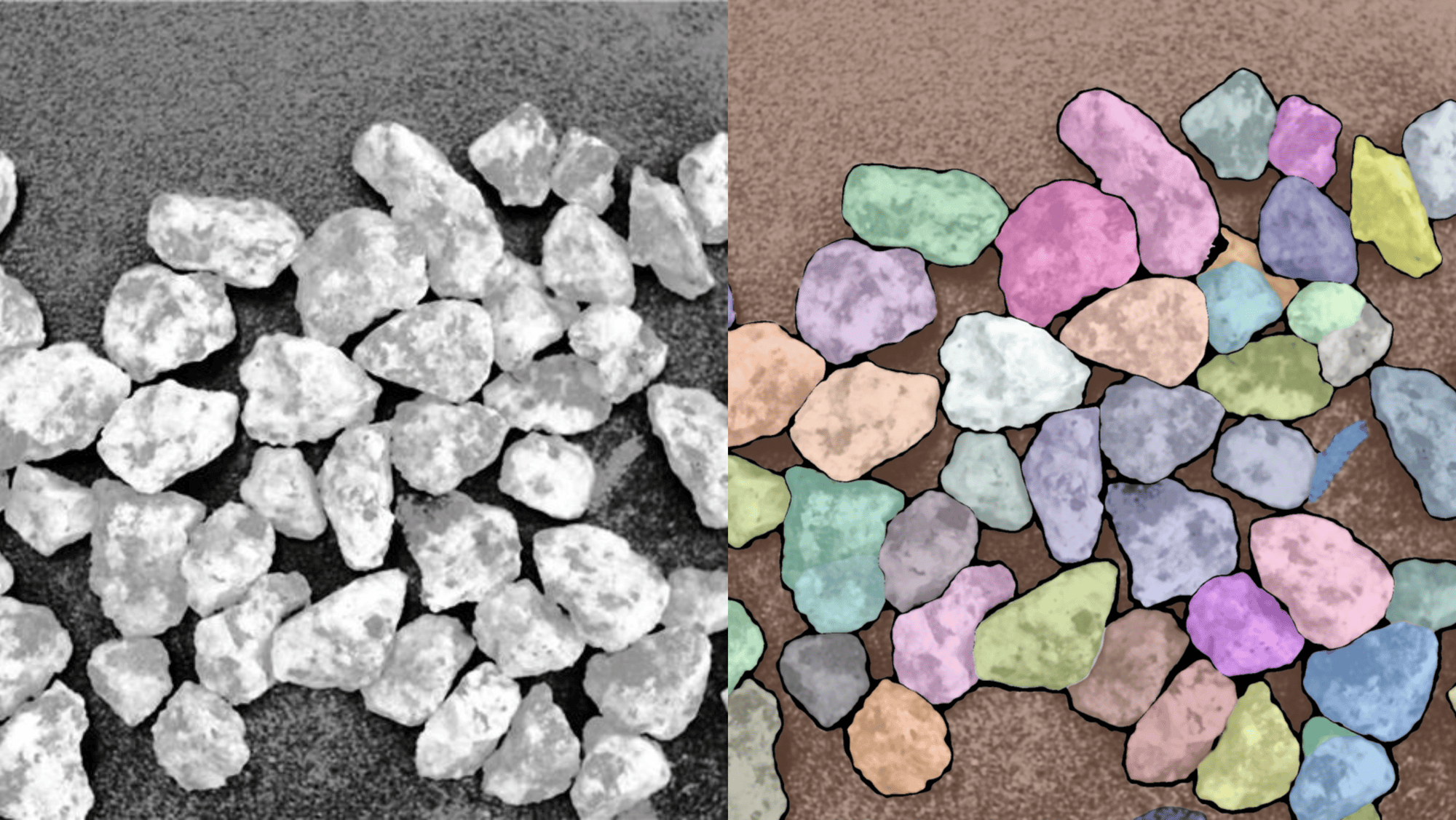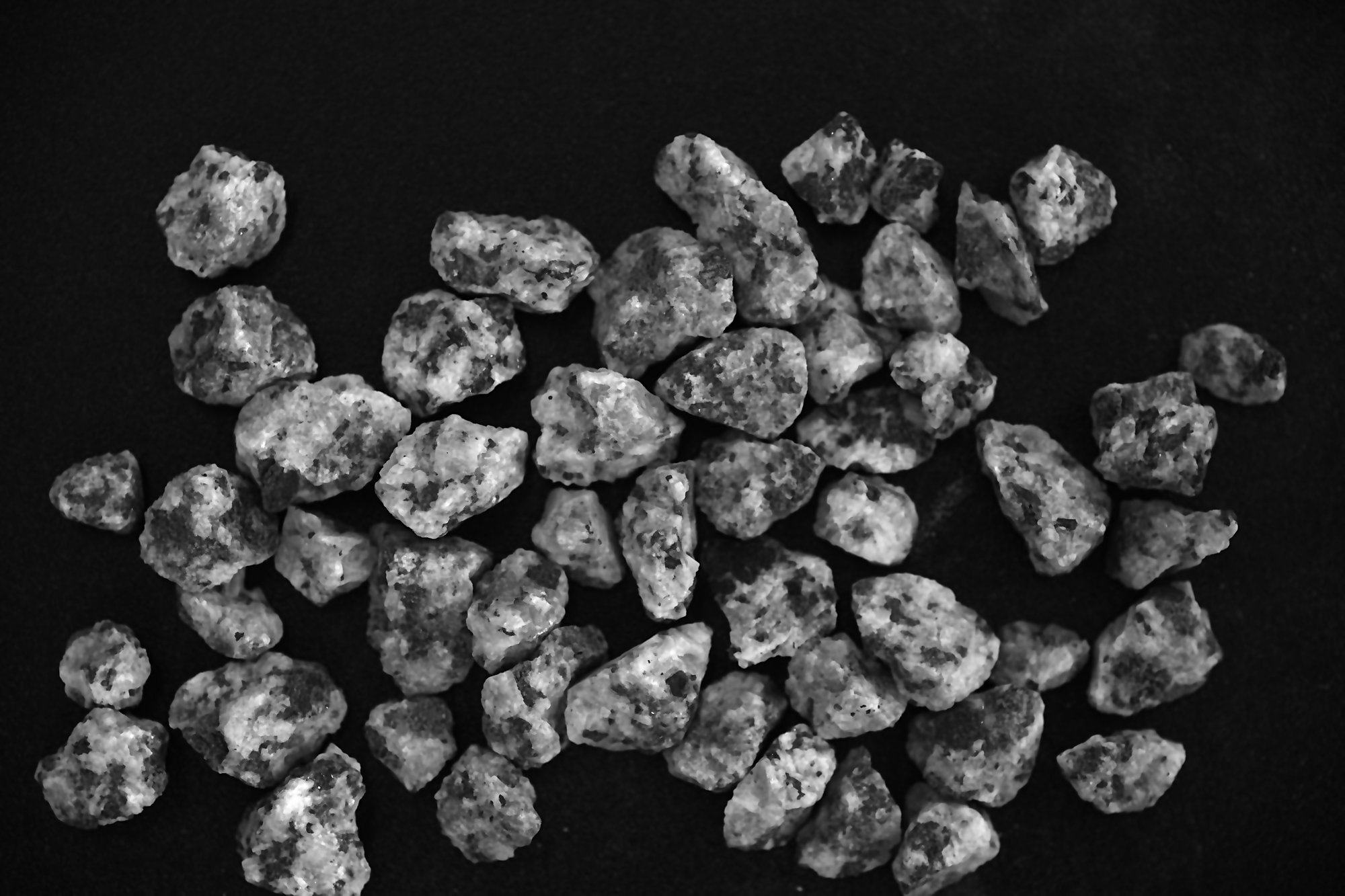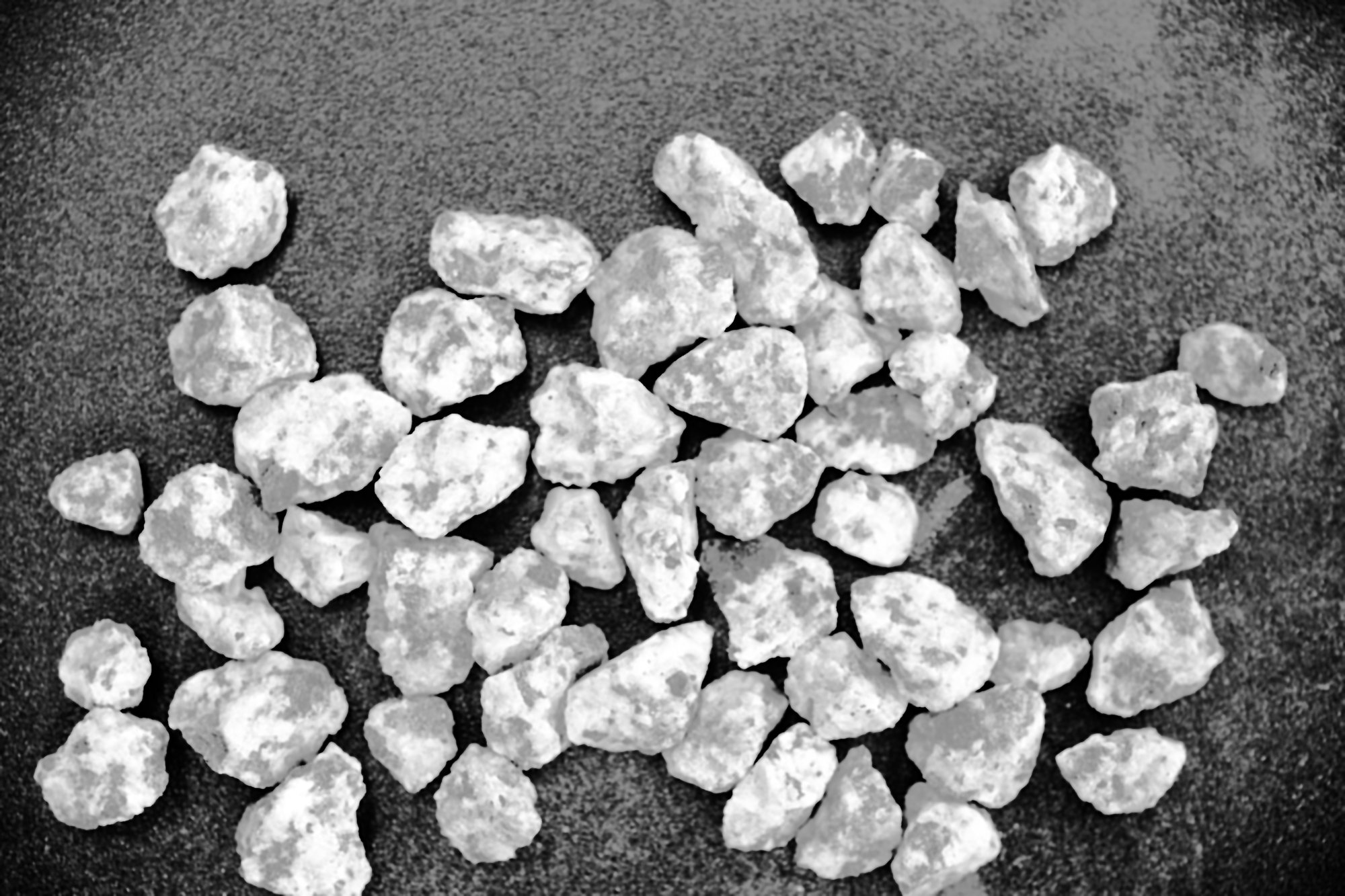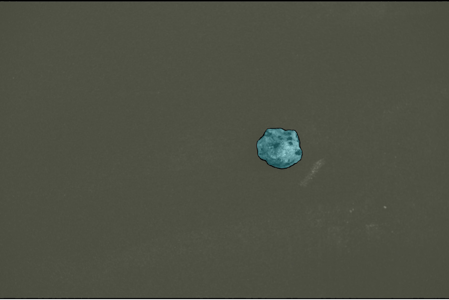WEBINAR TEMPLATE
Why is Vision AI the Preferred Solution for Sand and Gravel Inspection?

Feb, 2025. Vancouver
Traditional sand and gravel particle size detection relies on manual screening or mechanical measurement, which creates problems such as low efficiency and large subjective error. Through high-precision imaging + intelligent algorithm analysis, Vision AI technology can achieve:
- Leap in Efficiency: 10 milliseconds/region inspection speed.
- Accuracy Improvement: the particle size measurement error is ≤0.1mm, reaching the industrial micron standard.
- Automation Process: Seamless connection from imaging, analysis to report generation, rapid traceability.
Challenges
- Non-coplanar problem: During the capturing process, the ruler and the upper surface of the stone are often not in the same plane. In this case, an error will be generated when the calculation is performed using a ruler as a reference size. For example, if the actual size of a stone is 6.5mm, the calculated size is 6.3mm, and the error is 0.2mm.
- Uneven surface: The surface of the stone is uneven, which can lead to uneven lighting when shooting, affecting the clarity and consistency of the image, which later affects the accurate measurement of particle size.
- Shooting angle and distance: Changes in shooting angle and distance can affect the size and shape of the stones in the image, resulting in inaccurate measurements. It is necessary to ensure that the shooting equipment captures at a fixed position and angle to reduce the interference of this error on the model.
- Texture and colour variations: There may be a variety of texture and color variations on the surface of the stone, which can interfere with the identification and measurement of visual models. For example, certain textures can be mistaken for the boundaries of particles, resulting in inaccurate particle size measurements.
- Particle adhesion: During filming, stone particles may stick to each other, forming a larger clump. This makes it difficult for the vision model to accurately distinguish between individual particles, affecting particle size measurements.
- Lighting conditions: Changes in lighting conditions can affect the quality and contrast of the image, which in turn affects the performance of the vision model. It is necessary to ensure that the lighting conditions of the shooting environment are stable and uniform to improve the quality and consistency of the image.
DW Customized Solutions
We are committed to accurately solving customers' practical problems; From code optimization to hardware upgrades, we provide a wide range of solutions.
-
For the non-coplanar problem, we preset the unsharp mask to reduce the influence of blurred edges on the size calculation and calibrate the proportional dynamics.
-
To address issues such as uneven surfaces and inconsistent lighting, we offer optional histogram equalization with forced stretching of the grayscale distribution to compensate for local shadows and overexposure. Additionally, bilateral filtering, closing operations for filling, and opening operations help reduce noise effects caused by uneven surfaces.
-
For the deformation caused by the change of shooting angle and distance, we fix the zoom ratio to avoid pixel scale fluctuations.
-
For the problem of particle adhesion, our intelligent segmentation model can automatically cut and separate the samples in the training stage without post-processing, reducing the impact of sand and adhesion particles on subsequent detection.
- Our platform supports compatibility with most 2D cameras on the market, and our self-developed DaoAI camera can provide hardware-level optimization: the camera has a high dynamic range (HDR) of 18 million pixels, and the multi-directional Scheimpflug principal lighting design to effectively solve the problems of focus, occlusion, distortion and reflection. The influence of lighting conditions on the accuracy of subsequent inspections is greatly reduced, while providing detailed point cloud imaging.
Step-by-step Tutorial
With this tutorial, you will become familiar with all the steps required to complete sand and gravel inspection using the DW SDK.
Step1: Activate DaoAI World SDK license
Before you start, please make sure that you have purchased the DaoAI World SDK license (if you have not purchased it or have problems with activation, please contact our technical staff for online support).
Step2: Deploy a local SDK
For a detailed deployment solution, please refer to our official DaoAI World documentation to complete the deployment of the local SDK.
Step3: Image preprocessing (Pre-Processing Stage)
This step optimizes image quality, highlights target features, reduces noise interference, and adapts to model input requirements.
Enhance contrast and solve uneven lighting problems
Grayscale (focus on shape/texture, filter colour information)

Image scaling

Histogram Equalization (optional)

Enhance edge contrast and increase the sensitivity of the model to subtle defects
Filtering and Noise Reduction

Automatically picks the best threshold to separate the target and background

Unsharp mask (optional)

Step 4: Model Inference
Remote AI model will perform smart segmentation and obtain mask data.
Upload the preprocessed images to the server for inference through APIs.

Return the model inference results along with the parameters.

Extracting segmentation masks from model results, calculating physical dimensions, and generating reports)
The model results need to be Base64 decoded into binary and then reconstructed as a NumPy array.
Mask Data Analysis

Through RLE encoding, the binary mask is efficiently compressed, reducing data transmission. At the same time, based on a preset scale (1/41 mm per pixel), pixel dimensions are converted to actual physical size.
Generate an Excel file to record the area and diameter of each target, while also saving images, including segmentation masks overlaid on the original image, to visualize the detection results.

Pre-processed Images
.png?width=1403&height=888&name=%E9%A2%84%E5%A4%84%E7%90%863(%E6%8E%A9%E6%A8%A1).png)


Image of Separated Sample after Smart Segmentation

Application Scenarios
- Intelligent Ore Sorting: Grading Based on Particle Size + Texture Characteristics (Improving Copper Ore Sorting Accuracy)
- Rice Particle Size Detection: real-time monitoring of whether the rice particle size meets the standard (improve the particle size pass rate)
- BASF Crystal Coverage: Crystal coverage calculation and particle size analysis (shortening the time required for inspection).
Summary
Through customized algorithms (preprocessing enhancement, model tuning, post-processing filtering), we have effectively solved the core problems such as non-coplanar error, surface irregularity, texture interference, etc., Ensured that the measurement error is controlled within ±0.1mm. However, the robustness of the algorithm is highly dependent on the input image quality
Camera with higher specifications (such as DaoAI), with hardware level optimization, the detection limitation caused by the physical limitations of ordinary cameras can be further eliminated, and pixel-level precision image input can be provided for industrial inspection, ensure that the potential of the algorithm is maximized.